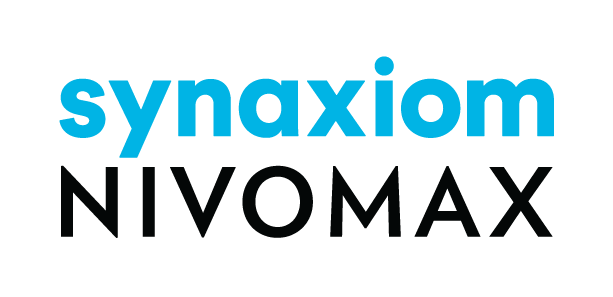Abstract
This whitepaper discusses why enterprise IT departments often utilize restricted user accounts without administrative rights, and how this impacts the installation of NIVOMAX Software and data library management. Specifically, it addresses challenges faced by users of the NIVOMAX Viewer Desktop and Network Data Server applications. The limitations described are common in enterprise environments utilizing MS Windows workstations. The paper also provides guidance for end-users to effectively collaborate with their IT departments to manage these challenges, leveraging detailed how-to instructions and procedures involving IT Department Administrators.
Introduction
Background and Context
In today’s security-conscious enterprise IT landscape, system security and data integrity are paramount. To enhance security, IT departments frequently issue devices with restricted user accounts, which pose significant challenges for end-users requiring software installations and data management beyond their default privileges. This is illustrated by the difficulties faced by some users when setting up the NIVOMAX Viewer applications.
Purpose of This White Paper
This document explains the rationale behind implementing restricted user accounts in enterprise settings and explores their impact on software installation and data management, focusing on the NIVOMAX Viewer Desktop and Network Data Server applications. It clarifies that these limitations are not specific to NIVOMAX but are prevalent across many similar enterprise environments. The paper aims to guide end-users on collaborating with IT departments to navigate these restrictions.
Enterprise IT Environment
Overview of Enterprise IT Architecture: Enterprise IT environments are complex assemblies of hardware, software, and network components, structured to support large organizations while ensuring data security, compliance, and operational reliability.
User Account Privileges: User accounts in enterprise IT are typically categorized into administrative and restricted types. Administrative accounts have elevated privileges for system-wide tasks like software installations and system configurations, whereas restricted accounts offer limited permissions to prevent unauthorized changes to the system.
Security and Compliance Considerations: Security and compliance are critical in enterprise IT, necessitating restricted user accounts to control the computing environment. These measures help mitigate risks related to unauthorized software installations, security breaches, malware, and data loss.
Restricted User Accounts
Definition and Characteristics: Restricted, or non-administrative accounts, are configured to limit users from performing significant system changes, including software installations or accessing critical system folders.
Reasons for Implementing Restricted Accounts
- Security: Minimizes the risk of malware and unauthorized system changes.
- Compliance: Ensures adherence to industry regulations and data protection requirements.
- Stability: Maintains system stability and prevents disruptions.
- Cost Control: Manages software licenses and reduces support costs.
Advantages and Disadvantages
While restricted accounts enhance security and system stability, they restrict user freedom, affecting user experience particularly in software installation and data management.
Software Installation Challenges
Impact on Software Installation: Restricted accounts often prevent the installation of software, posing challenges for legitimate applications like NIVOMAX Standalone Viewer.
NIVOMAX as a Case Study: NIVOMAX software requires administrative privileges for installation and data library management. Users with restricted accounts may face difficulties in adding or updating libraries, leading to frustration.
Clarifying Misconceptions: It is crucial to understand that NIVOMAX is not responsible for the restrictions placed on user accounts. Instead, these restrictions are part of broader security measures by enterprise IT departments.
Data Management Limitations
Restrictions on File and Folder Access: Restricted user accounts are typically limited to accessing and modifying files and folders within their user profile, primarily in the “My Documents” directory. Access to system folders and shared network drives is restricted to prevent unauthorized modifications.
Implications for NIVOMAX and Other Applications: The limitations on file and folder access can impact the functionality of applications like NIVOMAX, which may require read/write access to data repositories located outside the user’s profile directory. This can hinder the application’s ability to update data effectively.
Collaborative Solutions
Working with IT Departments: To overcome software installation and data management challenges, end-users must collaborate effectively with their IT departments. Communication and documentation play a vital role in this process.
Clear and concise communication with IT support teams is essential. End-users should provide detailed information about the software they require, its purpose, and any specific access requirements. Documentation of software requests and IT responses ensures transparency and accountability. End-users should always use supplied NIVOMAX forms when communicating the security requirements with your organization’s IT department.
Requesting Software Installations: End-users can request software installations by following established IT procedures within your organization. IT departments will assess the NIVOMAX Viewer software’s compatibility, security, and compliance with organizational policies before proceeding with the installation.
Best Practices
Balancing Security and Usability: Enterprise IT environments must strike a balance between security and usability. This section will discuss best practices for achieving this balance while ensuring that user accounts have the necessary privileges for their tasks.
User Education and Awareness: Educating end-users about the reasons behind restricted user accounts and the procedures for requesting software installations and modifying permissions is crucial. Increased awareness leads to more efficient collaboration with IT departments.
Continuous Improvement: Enterprise IT environments are dynamic, and policies and procedures should evolve to meet changing needs. Continuous improvement is essential to ensure that security measures remain effective while minimizing user frustration.
Conclusion
Recap of Key Points: This white paper has examined the use of restricted user accounts in enterprise IT environments, their impact on software installation and data management, and the specific challenges faced by users of the NIVOMAX Viewer software application.
The Importance of Collaboration: Effective collaboration between the software supplier, end-users and IT departments is the key to overcoming these challenges. By understanding the reasons behind restricted accounts and implementing solutions collaboratively, organizations can maintain security and compliance while enabling their users to work efficiently.
Moving Forward: As technology continues to evolve, it is essential for enterprise IT environments to adapt their policies and procedures accordingly. This white paper serves as a guide for navigating the complexities of restricted user accounts and facilitating a productive relationship between end-users and IT departments.

